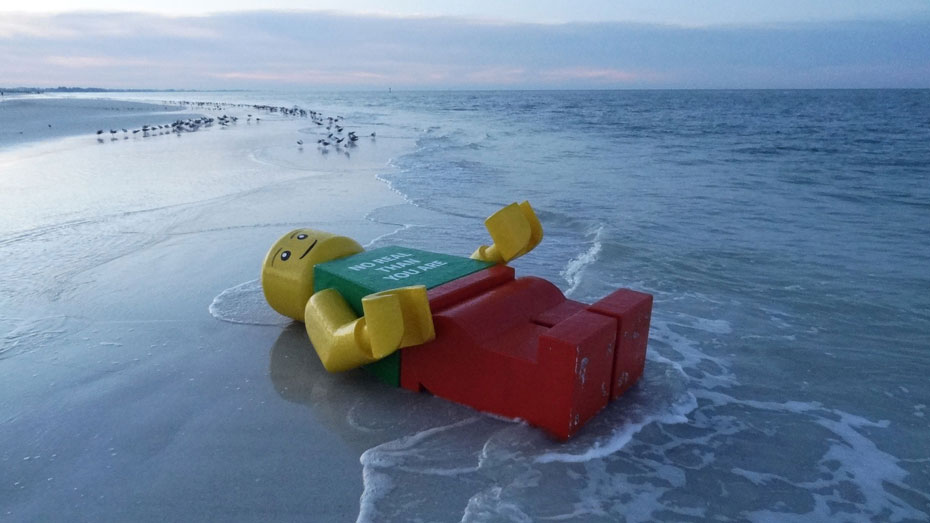Often seen cruising Bay Area skies about 1,000 feet off the ground, the Eureka airship is one of only two of its type in the world, and the only one in the United States that carries commercial passengers. This German-made zeppelin, owned by Airship Ventures, is not a blimp; though both types of airships are filled with helium, only a zeppelin has an internal framework.

INFLATED HISTORY
Count Ferdinand von Zeppelin patented plans for a rigid-frame airship around the turn of the 20th century. The United States has long been a huge supplier of helium: a 1927 ban on exporting it forced the German airship the Hindenburg to use highly flammable hydrogen — until its fiery demise in Lakehurst, N.J., in 1937.
THE HIGH COST OF FLYING
The Eureka is 246 feet long — longer than a Boeing 747. It can hover in place, spin 360 degrees and land as lightly as a butterfly. Tickets start at $375. This German-made airship, which holds two crew members and up to 10 passengers, cost 15 million euros (nearly $20 million at current exchange rates) and another 1.5 million euros in shipping.
GOOD WORK
The airship has functioned as a billboard for Farmers Insurance. It has also worked for NASA, tracked whales in the Puget Sound and often served as a platform to provide television camera coverage for sporting events.
IMPRESSIVE LINEAGE
The Eureka parks at Moffett Field, which was built in the 1930s to house the Macon, a United States Navy airship built by Goodyear. The Macon, which was large enough to carry and launch five biplanes, crashed in 1935 in a storm off the coast of Big Sur.
GHOST BLIMP?
In 1942, a blimp left Treasure Island on an antisubmarine patrol to Point Reyes. It landed in a residential neighborhood in Daly City. Mysteriously, authorities found it intact but the crew missing.
CREATURE COMFORTS
The Eureka travels about 40 miles per hour; its engines are only about as loud as a washing machine on its final spin cycle. The cabin is equipped with an onboard restroom (with a view), a rear love seat that has provided a setting for several marriage proposals, and windows that open. Passengers may stick their heads out but are encouraged to remove their glasses beforehand.

http://www.nytimes.com/2012/01/29/us/eureka-airship-flies-high-over-the-bay-area.html?scp=3&sq=bay area news&st=cse

Count Ferdinand von Zeppelin patented plans for a rigid-frame airship around the turn of the 20th century. The United States has long been a huge supplier of helium: a 1927 ban on exporting it forced the German airship the Hindenburg to use highly flammable hydrogen — until its fiery demise in Lakehurst, N.J., in 1937.
THE HIGH COST OF FLYING
The Eureka is 246 feet long — longer than a Boeing 747. It can hover in place, spin 360 degrees and land as lightly as a butterfly. Tickets start at $375. This German-made airship, which holds two crew members and up to 10 passengers, cost 15 million euros (nearly $20 million at current exchange rates) and another 1.5 million euros in shipping.
GOOD WORK
The airship has functioned as a billboard for Farmers Insurance. It has also worked for NASA, tracked whales in the Puget Sound and often served as a platform to provide television camera coverage for sporting events.
IMPRESSIVE LINEAGE
The Eureka parks at Moffett Field, which was built in the 1930s to house the Macon, a United States Navy airship built by Goodyear. The Macon, which was large enough to carry and launch five biplanes, crashed in 1935 in a storm off the coast of Big Sur.
GHOST BLIMP?
In 1942, a blimp left Treasure Island on an antisubmarine patrol to Point Reyes. It landed in a residential neighborhood in Daly City. Mysteriously, authorities found it intact but the crew missing.
CREATURE COMFORTS
The Eureka travels about 40 miles per hour; its engines are only about as loud as a washing machine on its final spin cycle. The cabin is equipped with an onboard restroom (with a view), a rear love seat that has provided a setting for several marriage proposals, and windows that open. Passengers may stick their heads out but are encouraged to remove their glasses beforehand.




Comment